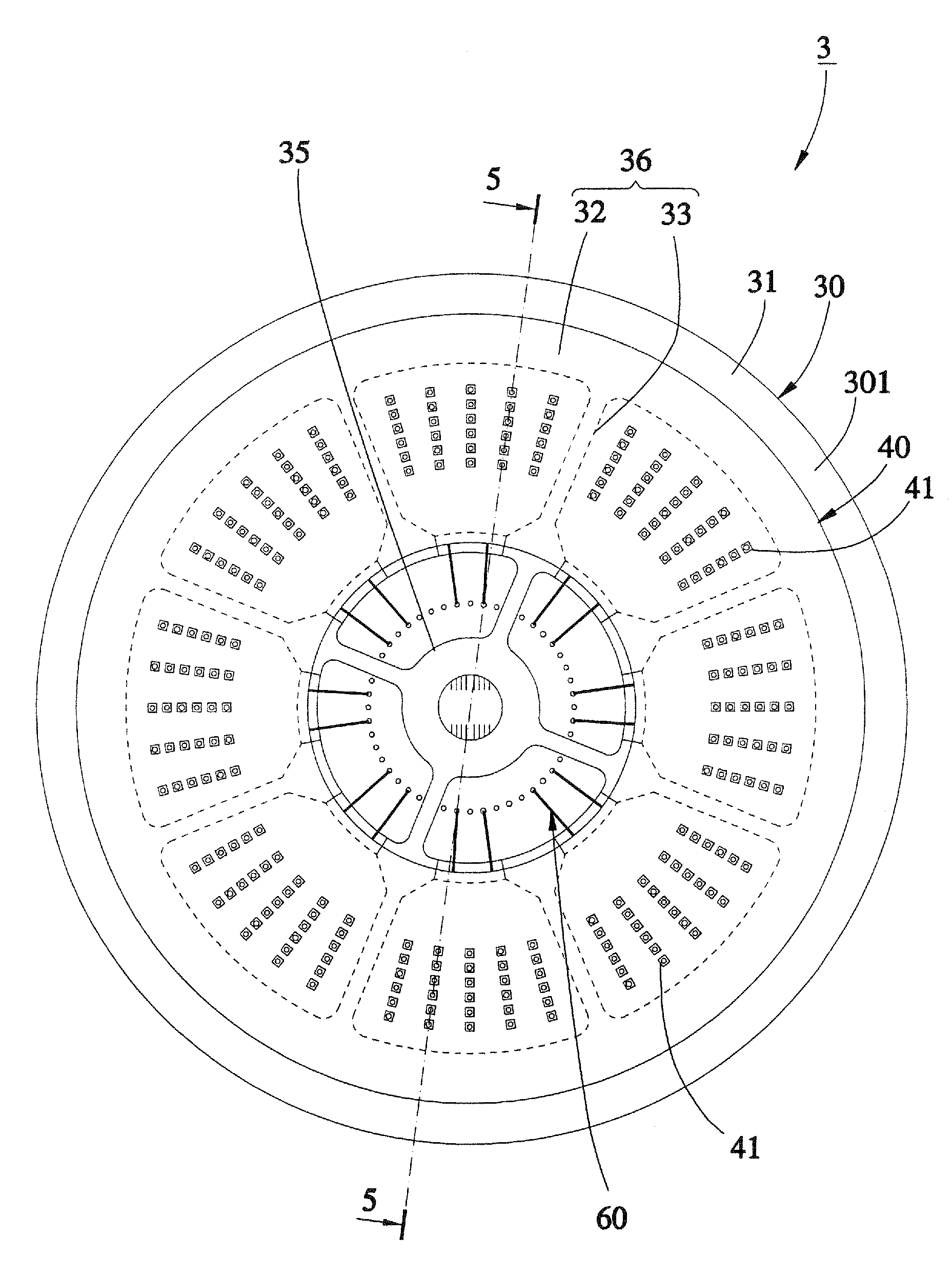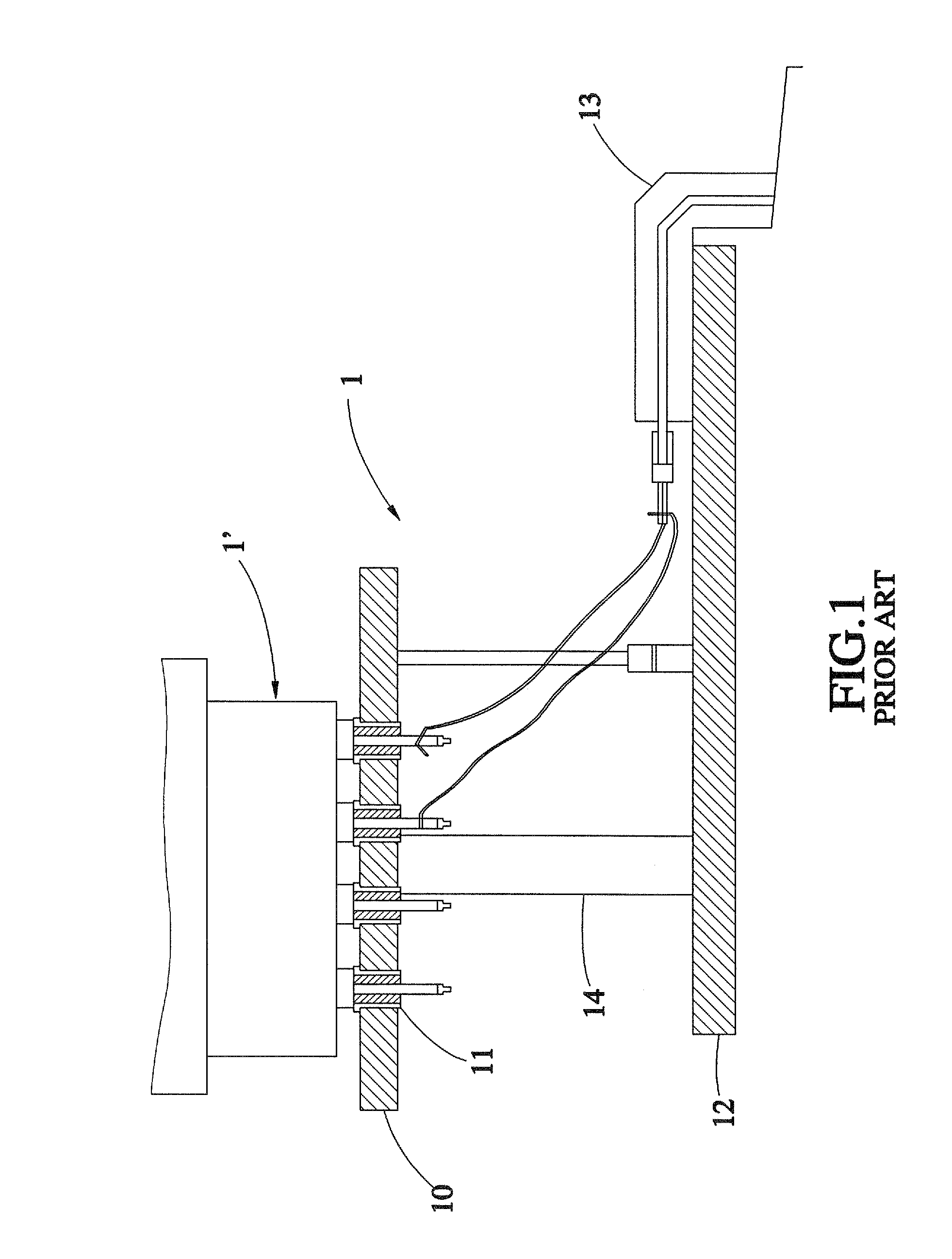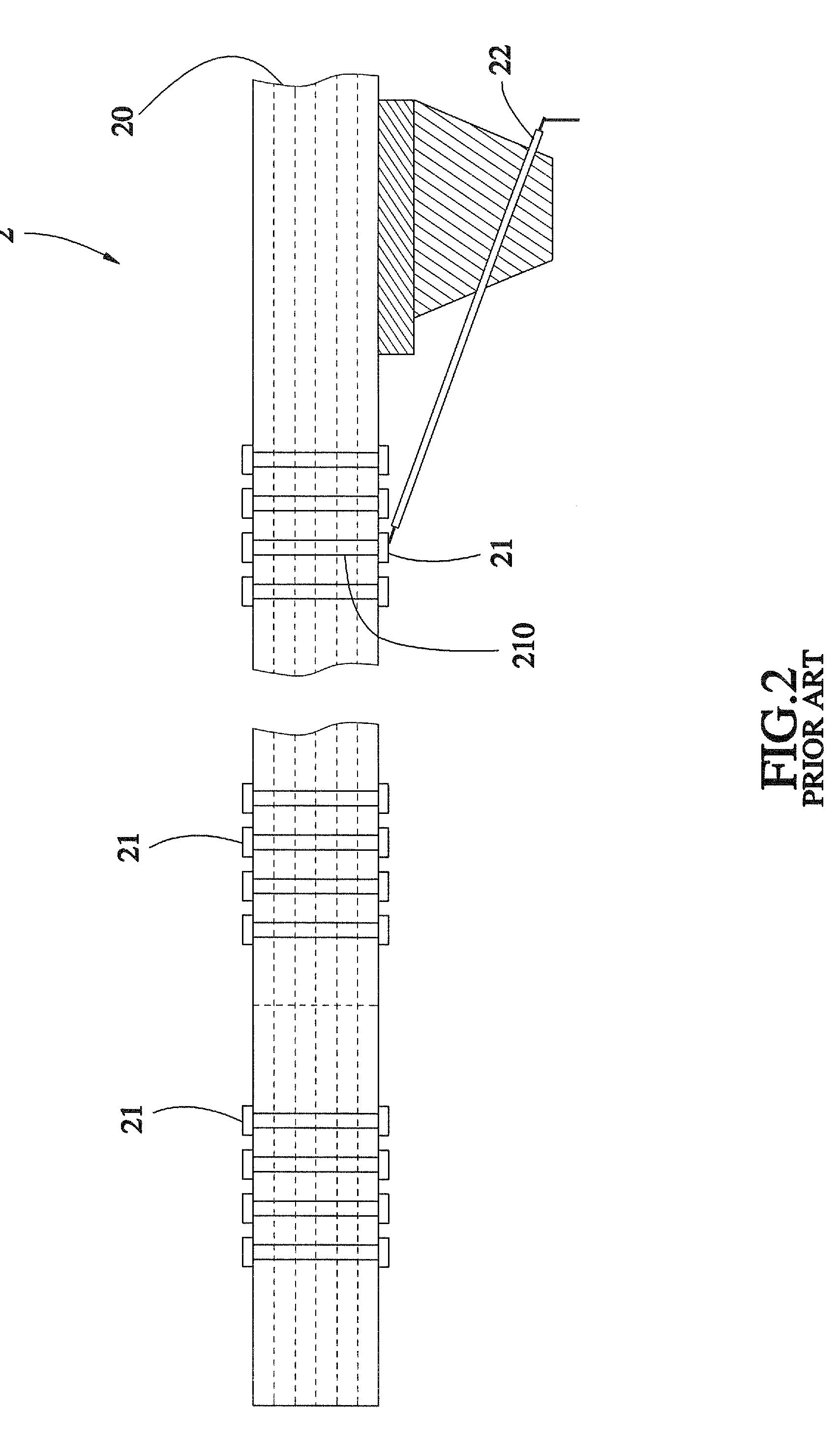Probing device
a probe card and probe technology, applied in the direction of solid-state devices, semiconductor/solid-state device testing/measurement, instruments, etc., can solve the problems of affecting the test, requiring much cost and labor time, and complicated fabrication of this design of the probe card, so as to achieve high quality transmission characteristics, high structural strength, and high efficiency
- Summary
- Abstract
- Description
- Claims
- Application Information
AI Technical Summary
Benefits of technology
Problems solved by technology
Method used
Image
Examples
first embodiment
[0034]Referring to FIGS. 3˜5, a probing device 3 in accordance with the present invention is shown for transmitting test signals from a tester to an IC wafer for measuring electric characteristics of the IC wafer. The probing device 3 comprises a rack 30, a circuit layer 40, a cantilever probe assembly 50, and multiple signal lines 60.
[0035]Referring to FIG. 6 and FIG. 5 again, the rack 30 is a rigid annular member having a certain strength and a dimension approximately equal to a semiconductor IC wafer. The rack 30 can be integrally formed of metal (for example, stainless steel), having a thickness corresponding to a regular typical multi-layer printed circuit board to bear stress during test operation, without causing deformation of the planarity of the rigid body. The rack 30 has a top surface 301, and a bottom surface 302 opposite to the top surface 301. The rack 30 further has, arranged in proper order from the periphery toward the center, a first ring portion 31, a second ring...
sixth embodiment
[0064]Therefore, the probing device 5′ of this sixth embodiment utilizes the rigid structure of the rack 80′ to support the circuit layer 45′ at the top side and the vertical probe assembly 90′ at the bottom side, effectively bearing the stress received by the circuit layer 45′ and the vertical probe pin set 90′. Further, because the vertical probe assembly 90′ are directly connected to the signal lines 65′, the signal lines 65′ directly transfer test signals from the tester to the probes 94′, and therefore no any intermediate adapter circuit means between the signal lines 65′ and the probes 94′ is necessary.
PUM
 Login to View More
Login to View More Abstract
Description
Claims
Application Information
 Login to View More
Login to View More - R&D
- Intellectual Property
- Life Sciences
- Materials
- Tech Scout
- Unparalleled Data Quality
- Higher Quality Content
- 60% Fewer Hallucinations
Browse by: Latest US Patents, China's latest patents, Technical Efficacy Thesaurus, Application Domain, Technology Topic, Popular Technical Reports.
© 2025 PatSnap. All rights reserved.Legal|Privacy policy|Modern Slavery Act Transparency Statement|Sitemap|About US| Contact US: help@patsnap.com



